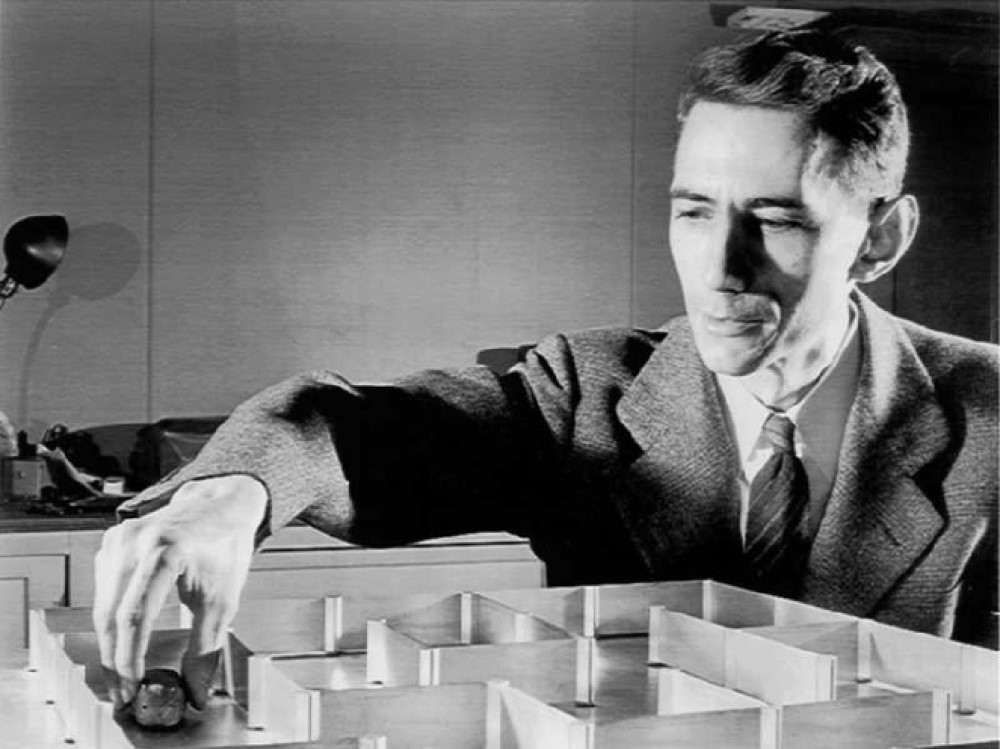
Known as "the father of information theory," Claude Shannon laid the foundation for the entire communication infrastructure underlying the modern information age when he published his landmark paper, "A Mathematical Theory of Communication," in 1948. In that paper, Shannon theorized that the content of a message simply consists of the number of 1s and 0s it takes to transmit it—a revolutionary notion that paved the way for today's technology of information transfer, including cell phones, hard drives, memory chips, TVs, and MP3s, among others. He is also credited with the digital circuit design theory, first proposed in 1937. A distant relative of Thomas Edison, Shannon was affiliated with Bell Laboratories for over 30 years, occasionally mingling with the likes of Albert Einstein and Alan Turing. Beyond the world of technology, Shannon was also a longtime academic who received several honorary doctorates during his lifetime. Despite never receiving a Nobel Prize for his pioneering work, Shannon accumulated numerous prestigious awards, such as the National Medal of Science (1966), the Institute of Electrical and Electronic Engineers Medal of Honor (1966), and the Kyoto Prize for Basic Science (1985).
Shannon's MIT roots go deep, beginning with his graduate studies in 1936. He worked on some of the early computers, including the most advanced analogue computer of that era: the differential analyser. He subsequently came up with the "switching circuits" based on Boole's concepts—which turned the design of digital circuits into a useful science with effective rules that still govern the manufacture of today’s chips and circuitry. Shannon received a Master of Science in electrical engineering, then his PhD in mathematics from MIT in 1940. His doctorate thesis was titled "An Algebra for Theoretical Genetics."
Over the years, Shannon's connection with his alma mater only strengthened. At the height of his career, after a 15-year stint at Bell Labs, he returned to MIT in 1956 as a visiting professor. During that time, he broke away from the main academic lines of research and continued to pass on his knowledge as a professor of communications science. From 1958 to 1979, he was MIT's Donnor Professor of Science, before serving as professor emeritus. Eugene Daub sculpted six statues of Shannon, and one is on display at MIT in the Laboratory for Information and Decision Systems.
